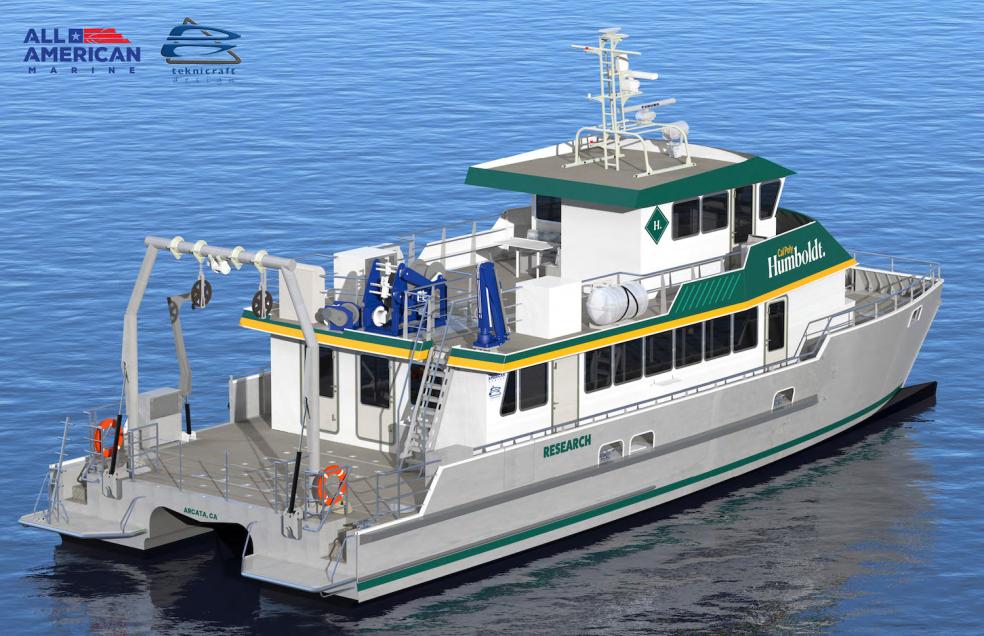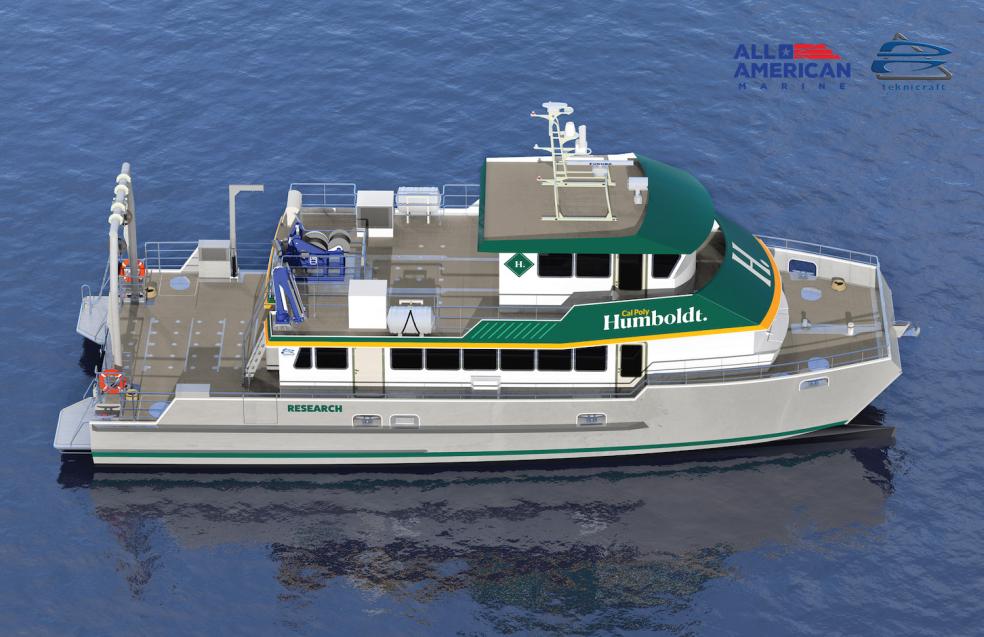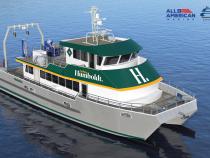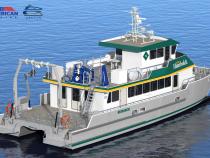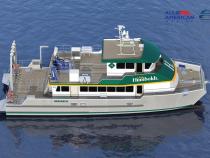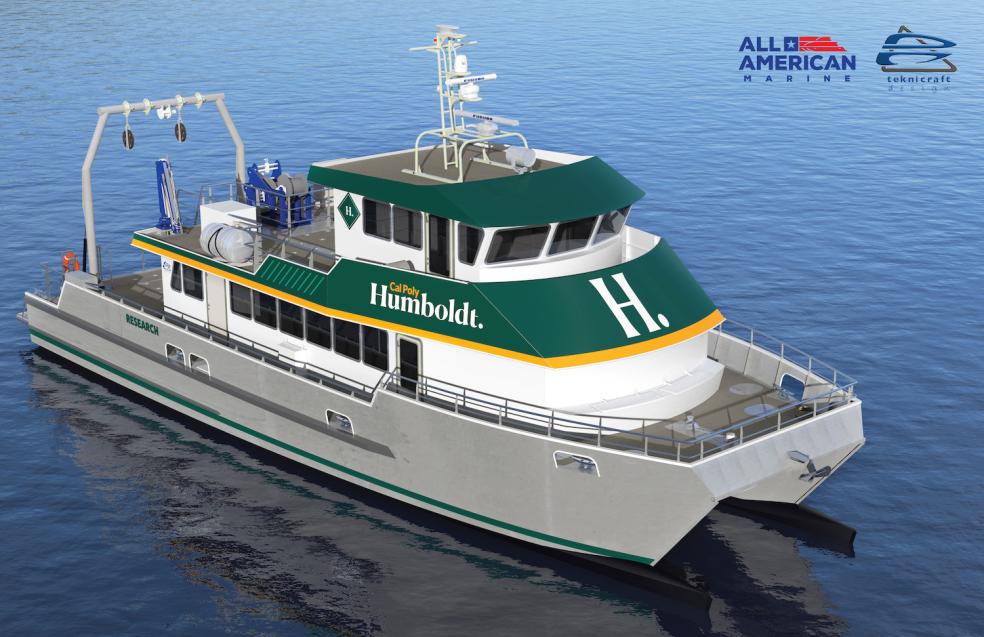
The 78-foot-by28-foot custom-built aluminum catamaran powered by twin 1100 horsepower Tier 4 engines will travel at speeds up to 24 knots. The vessel—expected to be operational in early 2025—will carry up to 40 students, faculty, and crew on day trips and accommodate up to 14 people on multi-day research voyages. The vessel will have a variety of hydraulic deck machinery for handling up to 5,000 lb of oceanographic equipment and instrumentation.
The deck will also accommodate divers entering the water from two dive platforms off the stern. The vessel’s laboratory and pilot house will carry a diverse array of state-of-the-art navigation and oceanographic electronics to measure physical and biological features of the ocean bottom and water column.
“I see this as a continuation of the University’s long tradition of supporting and advancing marine research and educating our future marine scientists,” says Rick Zechman, associate dean of Marine Operations and director of the University’s Telonicher Marine Lab. “The new vessel reaffirms our commitment to ocean exploration and the University’s academic marine science programs”
That legacy of supporting undergraduate and graduate academic experiences while promoting marine research spans decades with programs and facilities that include the R.V. Coral Sea, which was purchased by the University in 1998.
Since then, thousands of Cal Poly Humboldt students have learned first-hand everything from gathering and analyzing water and sediment samples to collecting fish from the deep ocean, while also learning the basics of seamanship and what is required to work on a vessel at sea, says Coral Sea captain Jim Long.
“It’s one thing to learn about marine sciences in a class—but when students get their feet wet (literally), the science becomes real,” Long says.
Student research continues on land at the Marine Lab, which was built in 1965. There, samples collected from aboard the Coral Sea are analyzed.
Compared to the Coral Sea, the new vessel, being built by All American Marine, will be more fuel efficient and capable of a faster cruising speed, which translates into exploring the ocean farther offshore.
“All American Marine remains on the leading edge of manufacturing techniques and is an industry innovator, merging the latest technology into a functional and proven vessel,” says Ron Wille, president and chief operating officer of All American Marine. “We are thrilled to receive this contract for another multi-mission research vessel that will service a variety of critical missions such as offshore research, oceanographic surveys, and ocean monitoring, as well as informing the emergent offshore wind market on the West Coast. This vessel will open a new era of ocean conservation and research capabilities.”
The Coral Sea is due for retirement, says Eric Riggs, dean of Cal Poly Humboldt’s College of Natural Resources & Sciences. Though well-maintained, the Coral Sea turns 50 this year, far exceeding the average 30-year lifespan of a research vessel. In addition, the state passed new emission standards effective in 2026 for vessels in the Coral Sea’s class, and replacing the ship’s five diesel engines to meet the new standards would cost up to $2 million.
Acquiring another second-hand vessel presents its own challenges. It would require retrofitting with engines that meet state standards and outfitting with oceanographic equipment to handle the needs specific to the types of research being conducted by faculty and students. Given these factors, and the anticipated growth in enrollment in the University’s marine science programs, it made more sense to invest in a vessel built specifically for Humboldt, according to Riggs.
The $7.9 million new research vessel is made possible by the state’s historic investment in Humboldt’s expansion as a polytechnic university.
As for the Coral Sea’s next destination, the vessel cannot operate in California due to the state’s emissions rules. Given those restrictions, the University is considering selling it.
The new vessel will have dual certification from the U.S. Coast Guard as an oceanographic research vessel and passenger vessel, creating additional opportunities for the University, region, and other agencies.
